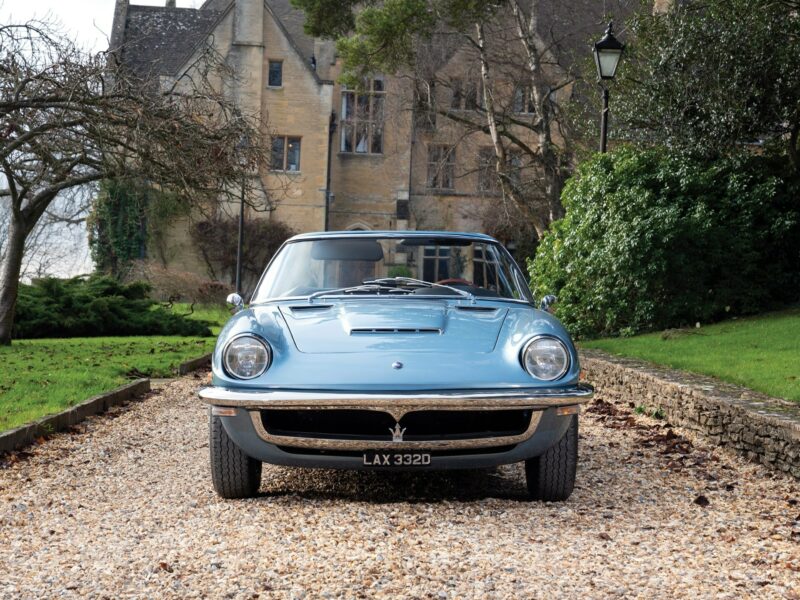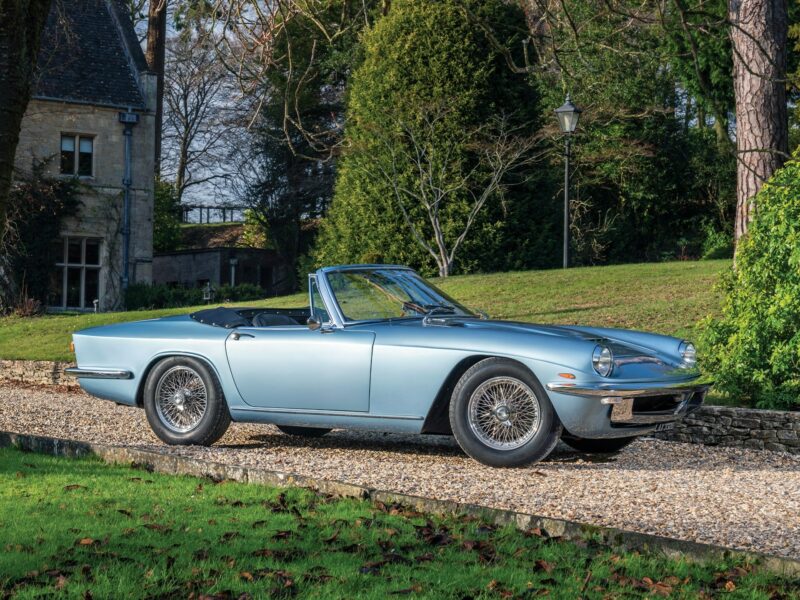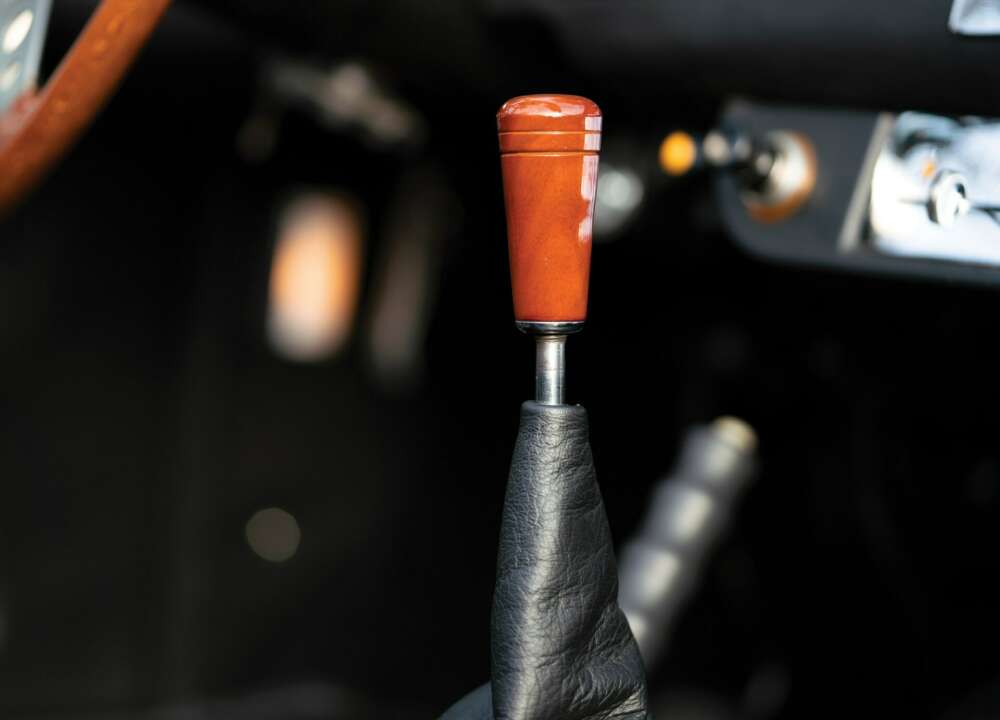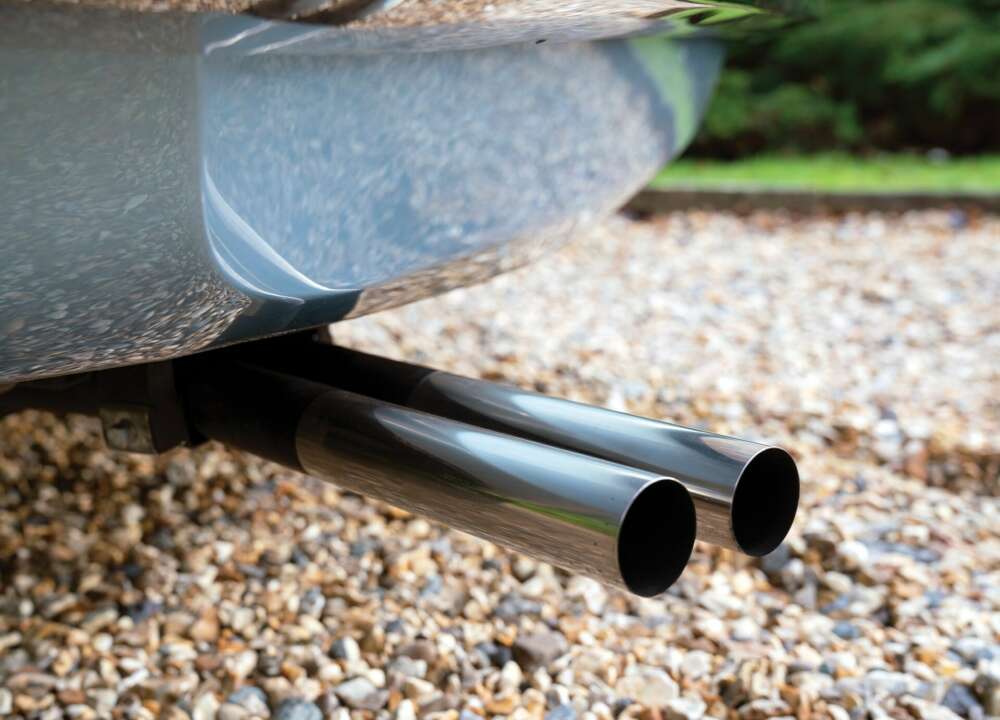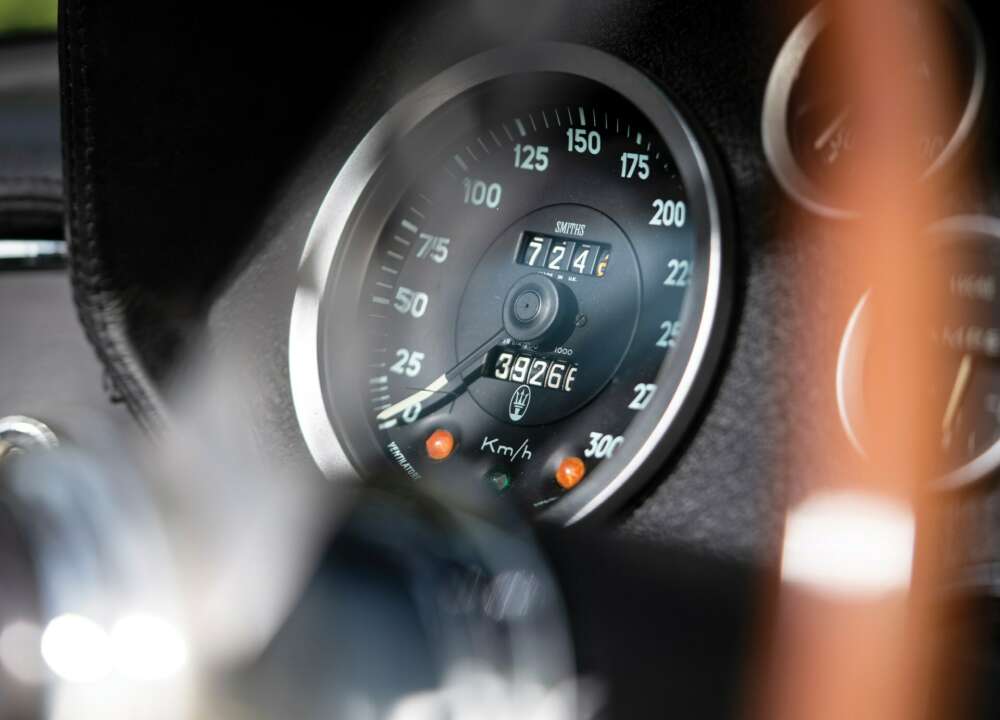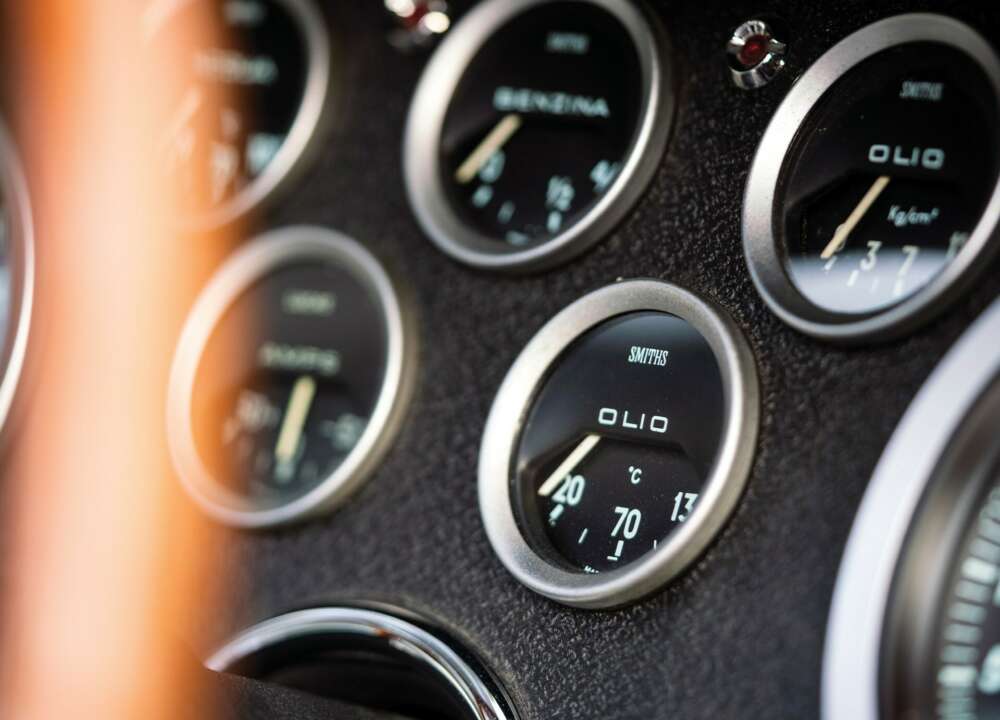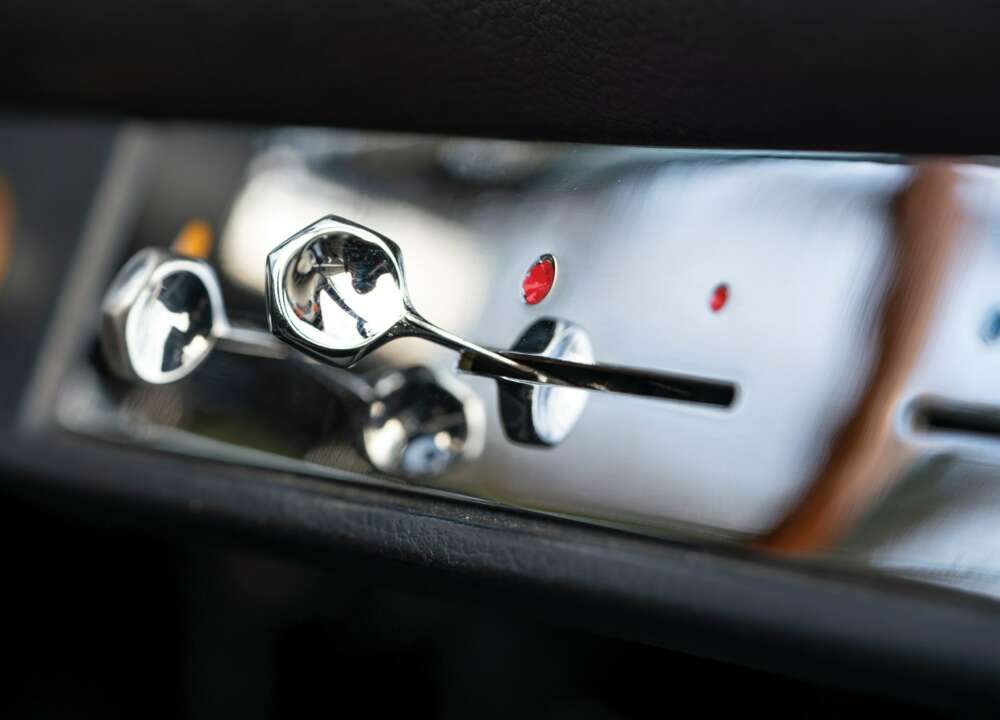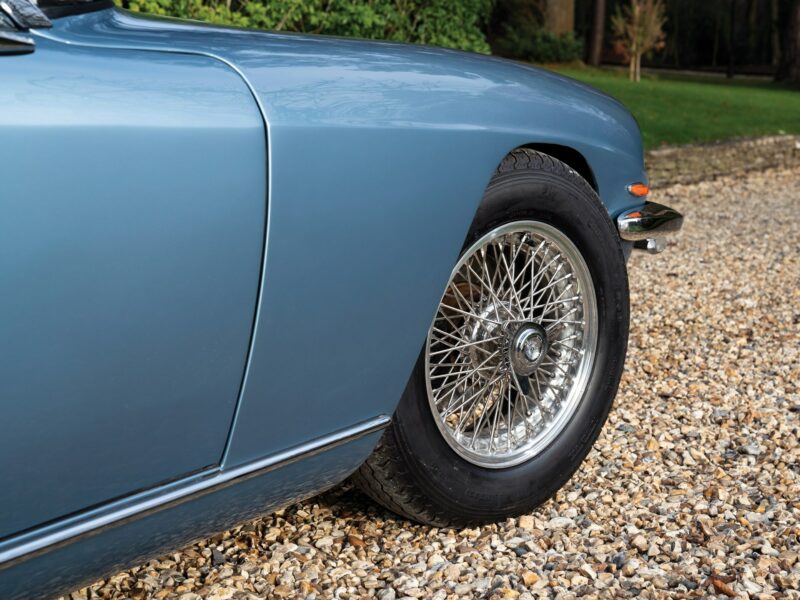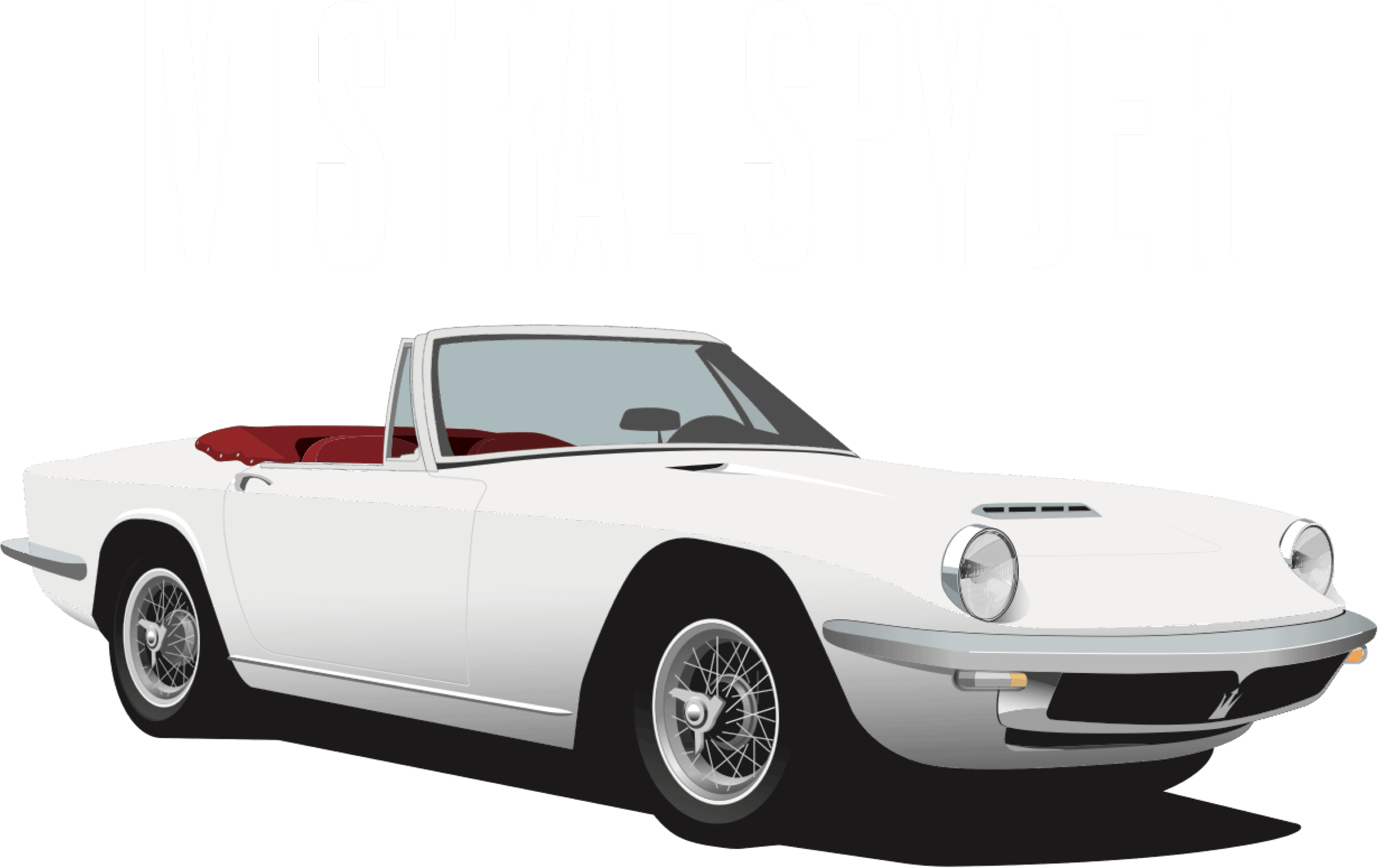
Beautiful, compact, glamorous and a joy to drive, seemingly flawless.
The Mistral Spyder was introduced at the 1964 Geneva show at just about the same time as the production of the Coupé got into its stride. The latter was predisposed to be made into an open version as the body lines almost pointed at where they should differ. While the Mistral has no upwards downwards belt body curve just behind the doors like the 3500 Vignale Spyder or Ghibli Spyder, it avoids looking like an endlessly long slab on wheels thanks to its short wheelbase. Its profile is perfectly proportioned. It looks neither too short or small nor too long or big. The soft top disappears entirely into a sufficiently deep well and is covered by a snap-on cover resulting in a very tidy appearance. The top is easy enough to operate, and the latches are of classic design.
The only aspect of the Mistral Spyder that is not quite popular is the optional hardtop. It seems to have been designed by a fan or baroque architecture having a lousy day with buttresses that extent hesitantly and clumsily over the rear. It is bizarre that this error was made when the 3500 Vignale Spyder had a perfectly sober hardtop.
In any case, Maserati learned its lesson because the later Ghibli Spyder had a very solemn stylish even minimalist hardtop. Thankfully that Mistral Spyder optional hardtop was not a very popular option and it is even more rare to see it in actual use nowadays. Like then owners have other cars for wet days. Of course, Spyders tend to be bought by optimistic extroverts and hardtops are pessimistic self entrapment tools. The trunk, accessed via a flat lid, did, of course, have its capacity reduced vertically but remained considerable and sufficient as the body line was high. There was also significant storage space behind the seats though keeping them safe when leaving the car would require raising the soft top.
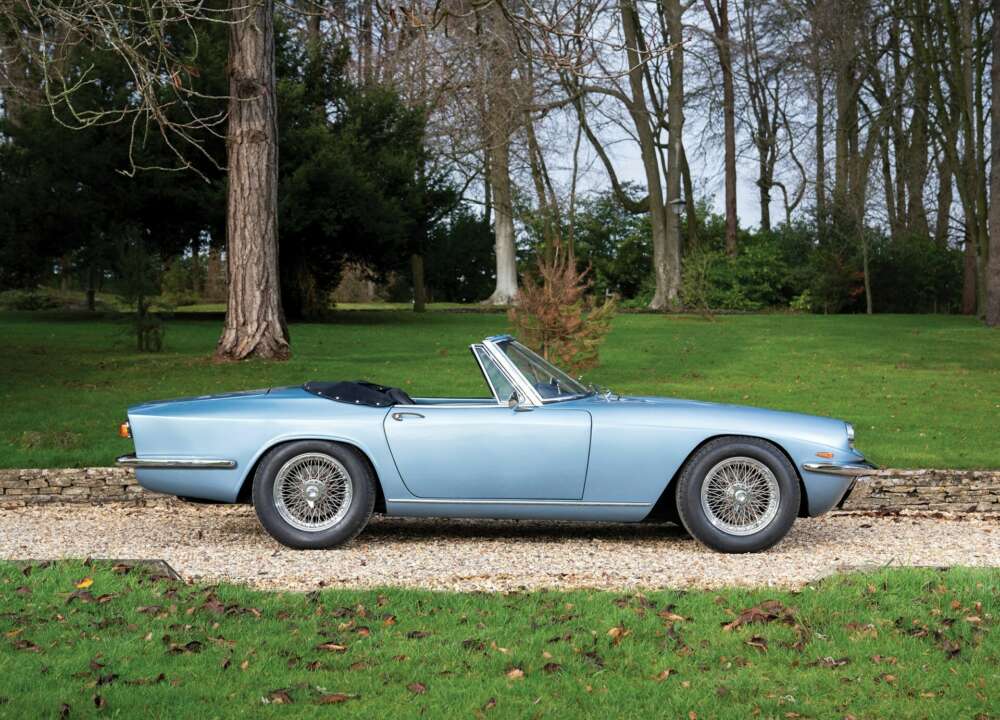
The chassis must have been reinforced, but no book mentions anything about this, in any case, the robust construction of the Maserati ladder frame chassis was nothing short of legendary.
For whatever reason, the stylized air vents on the front wings/fenders were not included in the Spyder, though one owner when ordering his car specified he wanted it to have them. This is typical of the sort of bespoke requests that Maserati readily agreed to, fulfilling its role of a tailor-made constructor.
What strikes is the perfect homogeneity of the package, the compact beauty, the light and responsive controls, that light gear lever guided precisely from gear to gear, the very satisfying rasp of the sei cilindri...everything about the drive was pleasant, and there is no wind buffeting. Importantly this is a car that even a frail driver can manage easily, but no matter your size, your grin will be the same!
Specifications
Only 124 Spyders were built. Engine size was the predominant variation. Between 1964 – 1966 27 cars were built with 3.5 engine, between 1964 – 1969 46 cars were built with 3.7 engine, between 1965 – 1969 51 cars were built with 4.0 engine. Only 12 right-hand drive Spyders were built.
Mistral Spyders saw far more use in movies than coupes. One scene is infamous: that of beautiful Swedish actress Britt Ekland stretching herself all over the bonnet of a light blue one in the 1967 comedy film The Bobo. She co-starred with her real-life husband, Peter Sellers. She plays a spoilt girl who is used to get what she wants, and boy does she want her Maserati. The James Bond girl (the man with the golden gun) later had a yellow Ghibli in real life.
Star actor Ugo Tognazzi used a Mistral Spyder extensively in the 1968 movie La Bambolona, a skirt-chasing story. In the 1966 Scusi, lei è favore vole o contrario? Alberto Sordi rushes from one mistress to another in his dark red Mistral Spyder. Several other mostly forgettable films in Italy saw Mistral Spyders in use. Maserati often helped film production companies by lending them cars because they generated glamorous exposure. In so doing they were smarter than Jaguar which turned down a new movie franchise in the sixties, one called James Bond, the producers of which then were received far better by Aston Martin...and the rest is history, to Jaguar’s eternal regret.
Engine
6 cylinders, in-line, light-alloy block
3485 cc, also 3694 from 1965 and 4014 cc from 1966
Power output: 235 hp; evolved to 245, 265 hp
Body
Two-door Spyder, 2+2, in aluminium with steel rear section
Designed by Frua
Performance
235 kph to 255 kph
Competitors
The Aston Martin DB6 Volante and the Ferrari 275GTS were the primary opponents vying for a client’s order.
The 275GTS had the same 3,3 litre V12 as the 275GTB producing 260hp. 200 275GTS were produced. It had neither the torque tube of later 275GTB’s –meaning driveline problems and vibrations can occur if misaligned- nor its legendary beautiful carrozzeria but a rather blunt distinct body. This disappointed US Ferrari importer Luigi Chinetti and prompted him to arrange a special production of ten 275GTS/4 NART Spyders: 275GTB/4’s with the top removed which were stunning and are now extremely coveted and worth north of 30 million Euros. The first Aston Volante DB6’s were built on DB5 bases. The 3,8 litre inline 6 produced 282hp in standard form and 325 in the vantage version which was also available for the Volante, a very rare and sought after version. Only 140 DB6 Volantes were built.
Valuation
Obviously like with the 3500 Vignale Spyder that preceded it and the Ghibli Spyder that succeeded it the Mistral Spyder is far rarer at 125 built than the Mistral coupe of which 828 were made. It is likewise even more desirable, so they have since the beginning changed hands for much higher values. At an auction in recent years, the 2016-17 season saw four offered and two sales, for vastly different prices: one for 450.938 Euros at the Gooding Amelia island auction March 10, 2017, and one reached 880.313 Euros at the London RM Sotheby’s of September 7, 2016. Both were four-litre versions. In the 2017-18 auction season, just two were offered, and both sold, one 3700 in a Vienna, Austria auction on June 23, 2018, and one, a four-litre for 916.631 Euros at the February 7, 2018, RM Sotheby’s Paris auction.
We are aware that the valuation of this car is very subjective and depends on many criteria. That is why auctions are used as a barometer to sense where the market is moving. However, premium restored or preserved classic Maseratis change ownership through private sales ( and seldom in an auction). As a result, rarely do we discover the price for an off-market transaction.
Persuasion
The Mistral Spyder lacks nothing compared to the other two, its inline-six is far less peaky, more torquey than the Ferrari V12 and its handling is much nimbler than the comparatively heavy Aston. And it is far more affordable. The Trident is the most satisfying to drive and own. Just ask Peter Straub, honorary president of the Swiss Maserati club. He has driven his Mistral Spyder in recent years in touring rallies all across Europe.
Initial texts by Marc Sonnery.
Registry
This registry is in the hands of the Classiche Masters team and was first started in June 2020. So If you happen to have information about these cars please mail info@classichemasters.com or go to https://join.classichemasters.com/c/Mistral-Spyder-Registry/ . A one-time registration is required.

